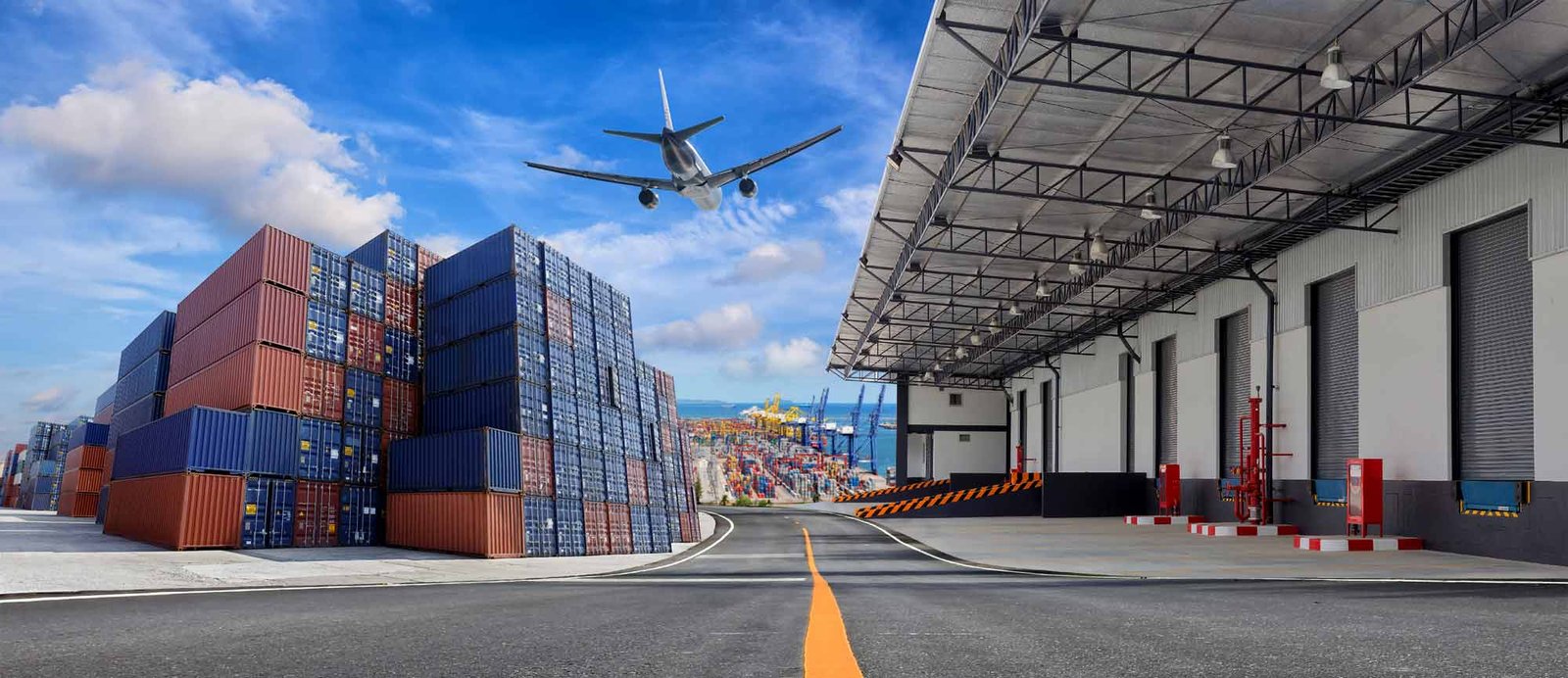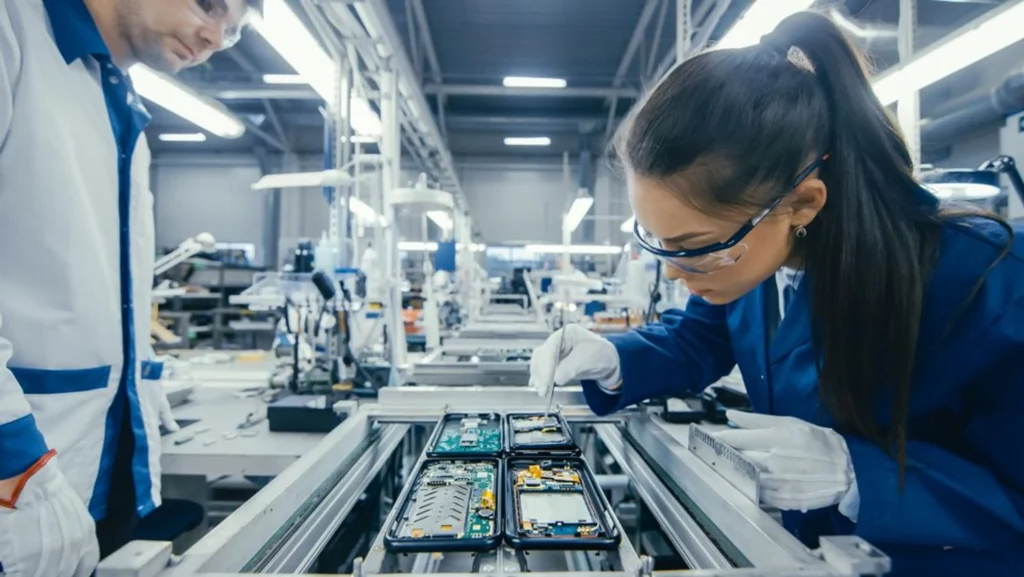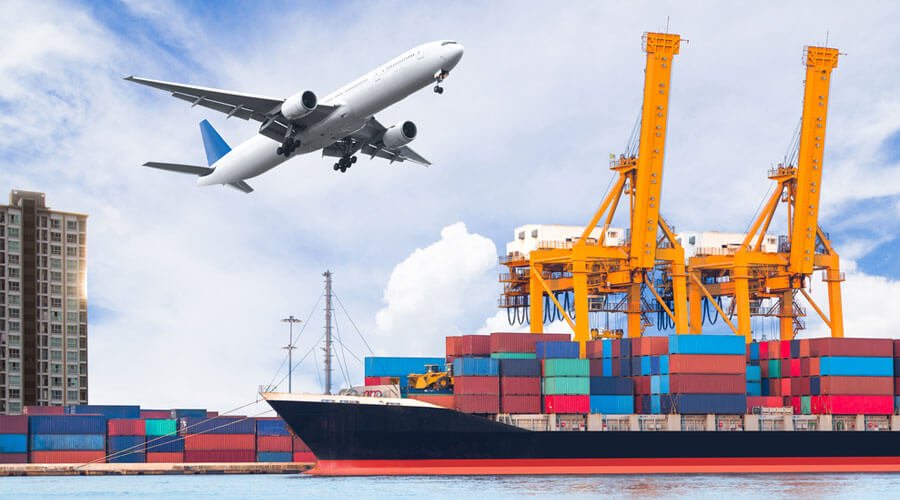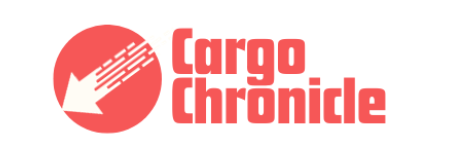Key Takeaways
1. Maintaining cold chain integrity is crucial in pharma and food reverse logistics to ensure product safety and quality.
2. Implement robust temperature monitoring systems and controls throughout the reverse logistics process to prevent temperature excursions.
3. Train personnel on proper handling and storage of temperature-sensitive products to minimize the risk of temperature deviations.
4. Utilize specialized packaging and insulation materials to maintain temperature stability during transportation and storage.
5. Establish clear standard operating procedures (SOPs) for handling returned products to ensure compliance with cold chain requirements.
6. Collaborate closely with logistics partners and service providers who have expertise in cold chain management.
7. Regularly conduct audits and inspections to identify potential gaps or areas for improvement in maintaining cold chain integrity.
8. Stay updated on regulatory requirements and industry best practices to adapt your reverse logistics processes and maintain compliance.
9. Leverage technology solutions such as temperature sensors, data loggers, and real-time monitoring systems to track and document temperature conditions.
10. Continuously monitor and analyze data to identify trends, patterns, or issues that may impact cold chain integrity, allowing for proactive problem-solving.

introduction
In the dynamic landscape of supply chains, reverse logistics plays a pivotal role. Unlike traditional career paths, which often follow well-defined trajectories, non-traditional paths in reverse logistics require creativity, adaptability, and a willingness to forge your own way.
In this article, we delve into the world of reverse logistics, uncovering unique opportunities and shedding light on unconventional roles. Whether you’re navigating e-commerce returns, optimizing sustainability efforts, or reimagining supply chain processes, these non-traditional paths offer exciting challenges and growth potential.
Join us as we explore the road less traveled—where innovation meets supply chain management, and where the unexpected becomes the norm.
- Reverse logistics management involves the process of managing the flow of goods from their final destination back to their point of origin.
- Non-traditional career paths in reverse logistics management offer alternative opportunities beyond traditional supply chain roles.
- Some non-traditional career paths in reverse logistics management include:
- Sustainability and Environmental Management: Focusing on reducing waste, optimizing recycling processes, and implementing sustainable practices in reverse logistics.
- Data Analytics and Technology: Utilizing data analysis and technology solutions to optimize reverse logistics operations, track product returns, and identify areas for improvement.
- Circular Economy and Product Lifecycle Management: Exploring ways to extend the lifespan of products, repurpose materials, and develop strategies for a more sustainable and circular economy.
- E-commerce and Online Retail: Managing the reverse logistics processes of returned products from online purchases, including refurbishment, repackaging, or reselling.
- Customer Experience and Relationship Management: Addressing customer concerns, managing returns, and implementing customer-centric strategies for reverse logistics.
- Non-traditional career paths in reverse logistics management require a diverse skill set, including problem-solving, data analysis, sustainability knowledge, and technology proficiency.
- These career paths offer opportunities to make a positive impact on sustainability, optimize operations, and contribute to the evolving field of reverse logistics management.
Reverse logistics is the process of managing the flow of goods from the point of consumption back to the point of origin for the purpose of recapturing value or proper disposal. It is an essential component of supply chain management that helps organizations reduce costs, improve customer satisfaction, and minimize environmental impact.
If you are interested in pursuing a career in reverse logistics, it is worth noting that experience in other fields can translate well to this career path. For instance, if you have experience in transportation, warehousing, or inventory management, you may be able to leverage that experience to transition into a reverse logistics role.
If you are looking to transition from roles in environmental management/compliance to reverse logistics, you may find that your experience with waste reduction and closed-loop systems can be leveraged in this field. Reverse logistics is a critical component of supply chain management that involves managing the flow of goods from the point of consumption back to the point of origin for the purpose of recapturing value or proper disposal. It is also closely linked to sustainability, as it helps organizations reduce costs, improve customer satisfaction, and minimize environmental impact.
If you have a background in manufacturing, you may find that your experience in production, quality control, and MRO can be applied to reverse logistics. Reverse logistics is the process of managing the flow of goods from the point of consumption back to the point of origin for the purpose of recapturing value or proper disposal. It is an essential component of supply chain management that helps organizations reduce costs, improve customer satisfaction, and minimize environmental impact. Your skills in inventory and asset management are also transferable to reverse logistics. For instance, you may be able to leverage your experience in managing inventory levels and tracking assets to transition into a reverse logistics role.
Sustainability to Reverse Logistics:
Experience in other fields can translate well to a reverse logistics career. For instance, if you have experience in transportation, warehousing, or inventory management, you may be able to leverage that experience to transition into a reverse logistics role. If you are looking to transition from roles in environmental management/compliance to reverse logistics, you may find that your experience with waste reduction and closed-loop systems can be leveraged in this field. If you have a background in manufacturing, you may find that your experience in production, quality control, and MRO can be applied to reverse logistics. Your skills in inventory and asset management are also transferable to reverse logistics.
To transition from roles in environmental management/compliance to reverse logistics, you may find that your experience with waste reduction and closed-loop systems can be leveraged in this field. Reverse logistics is a critical component of supply chain management that involves managing the flow of goods from the point of consumption back to the point of origin for the purpose of recapturing value or proper disposal. It is also closely linked to sustainability, as it helps organizations reduce costs, improve customer satisfaction, and minimize environmental impact.
A literature review conducted by Banihashemi et al. (2019) found that the implementation of reverse logistics as a strategic decision has gained significant attention amongst organizations due to its benefits to sustainable development. The study also highlights the importance of evaluating the performance of the reverse logistics process based on the three dimensions of sustainability, including environmental, economic, and social aspects.
Your experience in environmental management/compliance can be leveraged in reverse logistics. You can use your knowledge of waste reduction and closed-loop systems to help organizations reduce costs, improve customer satisfaction, and minimize environmental impact.
A Manufacturing Background

Your skills in inventory and asset management are also transferable to reverse logistics. For instance, you may be able to leverage your experience in managing inventory levels and tracking assets to transition into a reverse logistics role.
If you are looking to transition from roles in environmental management/compliance to reverse logistics, you may find that your experience with waste reduction and closed-loop systems can be leveraged in this field. Reverse logistics is a critical component of supply chain management that involves managing the flow of goods from the point of consumption back to the point of origin for the purpose of recapturing value or proper disposal. It is also closely linked to sustainability, as it helps organizations reduce costs, improve customer satisfaction, and minimize environmental impact. Your experience in environmental management/compliance can be leveraged in reverse logistics. You can use your knowledge of waste reduction and closed-loop systems to help organizations reduce costs, improve customer satisfaction, and minimize environmental impact.
Military Logistics Background
There are parallels between military supply chains and commercial reverse logistics. For instance, both require efficient management of inventory and assets, as well as the ability to track and trace goods throughout the supply chain. The U.S. military has been known to have a strong focus on logistics, and its logistics practices have been studied and emulated by businesses around the world.
Leadership and problem-solving abilities are highly valued in the field of reverse logistics. Reverse logistics is the process of managing the flow of goods from the point of consumption back to the point of origin for the purpose of recapturing value or proper disposal. It is an essential component of supply chain management that helps organizations reduce costs, improve customer satisfaction, and minimize environmental impact.
According to a literature review conducted by Banihashemi et al. (2019), the implementation of reverse logistics as a strategic decision has gained significant attention amongst organizations due to its benefits to sustainable development. The study also highlights the importance of evaluating the performance of the reverse logistics process based on the three dimensions of sustainability, including environmental, economic, and social aspects.
Reverse logistics leaders are in a position to fix the pervasive problem of retail returns, which is a multibillion-dollar problem without a clear solution. The logistics industry is eagerly trying to crack the code, and whoever wins will reap huge rewards. The National Retail Federation estimated that consumers returned 16% of the things they bought last year — roughly $761 billion in products.
Engineering to Reverse Logistics Technology:
Opportunities in repair and remanufacturing technologies are emerging in the reverse logistics industry. According to a report by the Reverse Logistics Association, the remanufacturing industry is expected to grow to $100 billion by 2030. Remanufacturing involves restoring used products to their original condition, which can help organizations reduce costs and minimize environmental impact.
Your technical skills can be applied to reverse logistics systems/automation. For instance, you may be able to leverage your experience in software engineering to develop systems that can optimize reverse logistics processes.
A Legal/Regulatory Compliance Background in reverse logistics:
If you have a background in legal/regulatory compliance, you may find that your understanding of EHS, trade, and import/export compliance can be leveraged in reverse logistics.
Ensuring reverse logistics programs meet regulations is critical to the success of the program. According to the U.S. Environmental Protection Agency (EPA), reverse logistics programs must comply with Resource Conservation and Recovery Act (RCRA) regulations. The EPA has also issued regulations on reverse distribution and policy on reverse logistics to address the complex systems used by the retail industry to manage the reverse flow of unsold retail items.
Education and Certifications in reverse logistics
There are several educational and certification programs available that can help you gain the necessary knowledge and skills.
For instance, the Reverse Logistics Association has partnered with American Public University to offer a Bachelor’s and Master’s degree in Reverse Logistics. The program is designed to provide students with a comprehensive understanding of reverse logistics, transportation and logistics, management, and manufacturing sectors. The program is also accredited by the Accreditation Council for Business Schools and Programs (ACBSP).
There are also several industry-recognized credentials that can supplement your work experience. For example, the Reverse Logistics Professional Certification Program offered by the Reverse Logistics Association is designed to provide professionals with the knowledge and skills needed to manage reverse logistics processes.
Career Path Examples:
Examples of professionals who made non-traditional moves to reverse logistics roles, you may find it helpful to explore online resources such as career blogs, LinkedIn, and industry publications. Unfortunately, I do not have access to such resources at the moment. However, I can suggest some general tips that may help you in your career transition:
1. Identify your transferable skills:
Consider the skills you have developed in your current or previous roles and how they can be applied to reverse logistics. For instance, if you have experience in transportation, warehousing, or inventory management, you may be able to leverage that experience to transition into a reverse logistics role.
2. Explore educational and certification programs:
There are several educational and certification programs available that can help you gain the necessary knowledge and skills. For example, the Reverse Logistics Association offers a Bachelor’s and Master’s degree in Reverse Logistics. The program is designed to provide students with a comprehensive understanding of reverse logistics, transportation and logistics, management, and manufacturing sectors. The program is also accredited by the Accreditation Council for Business Schools and Programs (ACBSP).
3. Network with professionals in the Reverse Logistics Field field:
Reach out to professionals in the reverse logistics industry to learn more about their experiences and gain insights into the industry. You can connect with professionals on LinkedIn, attend industry events, and join professional organizations such as the Reverse Logistics Association.
4. Stay up-to-date with industry trends:
Keep yourself informed about the latest trends and developments in the reverse logistics industry. This can help you identify new opportunities and stay ahead of the competition.
In Conclusion, transferable skills and continuous learning can open up opportunities in the specialized field of reverse logistics. Reverse logistics is the process of managing the flow of goods from the point of consumption back to the point of origin for the purpose of recapturing value or proper disposal. It is an essential component of supply chain management that helps organizations reduce costs, improve customer satisfaction, and minimize environmental impact.
If you are looking to transition to a career in reverse logistics, it is worth noting that experience in other fields can translate well to this career path. For instance, if you have experience in transportation, warehousing, or inventory management, you may be able to leverage that experience to transition into a reverse logistics role.
Continuous learning is also important in the field of reverse logistics. There are several educational and certification programs available that can help you gain the necessary knowledge and skills. For example, the Reverse Logistics Association offers a Bachelor’s and Master’s degree in Reverse Logistics. The program is designed to provide students with a comprehensive understanding of reverse logistics, transportation and logistics, management, and manufacturing sectors. The program is also accredited by the Accreditation Council for Business Schools and Programs (ACBSP).

FAQ
What are the opportunities for reverse logistics?
There are several opportunities for reverse logistics that organizations can explore:
- Product Refurbishment and Resale: Reverse logistics provides an opportunity to refurbish and resell returned or refurbished products, reducing waste and generating additional revenue.
- Parts and Component Recovery: Reverse logistics allows for the recovery of valuable parts and components from returned or defective products. These recovered parts can be reused or repurposed, reducing costs and promoting sustainability.
- Recycling and Responsible Disposal: Reverse logistics enables organizations to properly recycle or dispose of products and materials in an environmentally responsible manner. This promotes sustainability and compliance with regulations.
- Customer Satisfaction and Loyalty: Effective reverse logistics processes, such as hassle-free returns and prompt resolutions, can enhance customer satisfaction and loyalty. Positive experiences during returns can result in repeat business and increased customer retention.
- Data Insights and Process Improvement: Reverse logistics generates valuable data on return patterns, reasons for returns, and product quality issues. Analyzing this data provides insights for process improvements, product design enhancements, and better customer understanding.
- Supply Chain Optimization: Reverse logistics offers an opportunity to optimize the supply chain by improving inventory management, reducing stockouts, and enhancing resource utilization. It helps in identifying inefficiencies and implementing corrective measures.
- Regulatory Compliance: Reverse logistics allows organizations to comply with regulations related to product recalls, disposal of hazardous materials, and proper handling of returned products.
What is the career path for a logistics manager?
- Entry-level Positions: Individuals often start their careers in logistics as logistics coordinators, analysts, or supervisors. These roles involve assisting with operational tasks, coordinating shipments, managing inventory, and analyzing logistics data.
- Logistics Specialist/Supervisor: After gaining experience, professionals may advance to a specialist or supervisor role. They oversee specific areas of logistics operations, such as transportation, warehouse management, inventory control, or procurement. Their responsibilities include managing teams, optimizing processes, and ensuring smooth operations.
- Logistics Manager: As professionals gain more experience and demonstrate leadership capabilities, they can progress to a logistics manager role. Logistics managers oversee the entire logistics function within an organization. They are responsible for strategic planning, budgeting, coordinating logistics activities, managing vendor relationships, and ensuring timely and cost-effective delivery of goods.
- Senior-Level Roles: With significant experience and expertise, logistics managers can move into senior-level positions such as senior logistics manager, director of logistics, or supply chain manager. In these roles, they have broader responsibilities, including strategic decision-making, managing multiple departments or locations, and collaborating with other functional areas of the organization.
- Executive Leadership: For those aspiring to reach the highest levels of management, there may be opportunities to advance to executive leadership positions such as Chief Supply Chain Officer (CSCO) or Vice President of Logistics/Supply Chain. In these roles, individuals have overall responsibility for the organization’s supply chain strategy, performance, and alignment with business objectives.
Career development in logistics management may also involve pursuing professional certifications such as Certified Supply Chain Professional (CSCP) or Certified Professional in Logistics and Supply Chain Management (CPLSCM). Continuous learning, staying updated with industry trends, and networking within the logistics community are essential for career growth in this field.
What is reverse logistics is it different than traditional logistics?
Reverse logistics is indeed different from traditional logistics. While traditional logistics focuses on the movement of products from the point of origin to the point of consumption, reverse logistics deals with the processes and activities involved in handling goods moving in the opposite direction, typically from the customer back to the manufacturer or retailer. Here are some key differences between reverse logistics and traditional logistics:
- Flow Direction: Traditional logistics involves the forward flow of goods from suppliers to customers, encompassing activities such as procurement, transportation, warehousing, and distribution. Reverse logistics, on the other hand, involves the reverse flow of goods, including product returns, recalls, repairs, refurbishment, recycling, or disposal.
- Purpose: Traditional logistics is primarily focused on delivering products to customers efficiently and effectively, ensuring timely availability and customer satisfaction. Reverse logistics, however, deals with product recovery, minimizing waste, resolving customer issues, and managing the reverse flow of goods for various purposes like recycling, repair, or proper disposal.
- Complexity: Reverse logistics can be more complex than traditional logistics due to the diverse nature of returned products. It involves processes like product inspection, testing, sorting, disposition determination, and handling of different types of returns (e.g., damaged, defective, expired, or unwanted items). Traditional logistics typically follows a more standardized and predictable flow.
- Stakeholders: While traditional logistics primarily involves coordination among suppliers, manufacturers, distributors, and end customers, reverse logistics includes additional stakeholders such as retailers, service centers, repair facilities, recyclers, and disposal agencies. Collaboration and communication among these stakeholders are crucial for efficient reverse logistics operations.
- Regulatory Considerations: Reverse logistics often involves compliance with specific regulations and guidelines related to product recalls, hazardous material handling, disposal of pharmaceuticals, electronics, or other regulated items. These regulatory aspects are less prevalent in traditional logistics.
- Value Recovery: Reverse logistics provides opportunities for value recovery from returned products. Through activities like product refurbishment, reselling, parts recovery, or recycling, organizations can generate value from returned goods. Traditional logistics primarily focuses on delivering products efficiently without significant emphasis on value recovery.
While there are differences between reverse logistics and traditional logistics, it’s important to note that they are interconnected and complement each other within the overall supply chain. Effective management of both traditional and reverse logistics is crucial for optimizing supply chain operations and meeting customer expectations.
What is the progression of reverse logistics?
The progression of reverse logistics typically involves several stages or steps that organizations follow to effectively manage the reverse flow of goods. Here is a general progression of reverse logistics:
- Returns Management: The first stage involves establishing a returns management process. This includes defining return policies, creating a dedicated returns portal or system, and providing clear instructions to customers on how to initiate returns. Efficient returns management involves capturing relevant information, such as reason codes for returns, to gain insights into the nature and frequency of returns.
- Reverse Supply Chain Integration: The next stage focuses on integrating the reverse supply chain with the forward supply chain. This involves establishing communication channels, collaboration, and coordination with various stakeholders, including customers, suppliers, retailers, service centers, and disposal agencies. Integration enables seamless flow of information and goods throughout the reverse logistics process.
- Product Inspection and Sorting: Once returned products are received, they undergo inspection to determine their condition and eligibility for various disposition options. This stage involves sorting products based on their potential for refurbishment, repair, resale, recycling, or disposal. Proper documentation and tracking of returned products are essential during this stage.
- Repair, Refurbishment, and Refinishing: Products identified for repair or refurbishment undergo necessary repairs, refurbishment processes, or refinishing to restore them to a usable or sellable condition. This stage may involve collaboration with service centers, repair facilities, or specialized vendors to ensure quality repairs and refurbishment according to established standards.
- Asset Recovery and Resale: If products can be resold, this stage involves determining the appropriate channels for resale, such as secondary markets, online platforms, or liquidation channels. Organizations may choose to sell returned products themselves or partner with third-party vendors for liquidation. Asset recovery aims to generate value from returned products and reduce financial losses.
- Recycling and Disposal: For products that cannot be repaired, refurbished, or resold, the focus shifts to recycling or proper disposal. This stage involves adhering to environmental regulations and guidelines for the responsible disposal of hazardous materials, electronics, pharmaceuticals, or other regulated products. Collaboration with certified recyclers or disposal agencies is important to ensure compliance and minimize environmental impact.
- Data Analysis and Continuous Improvement: Throughout the reverse logistics process, data analysis plays a crucial role. Analyzing data on returns, disposition outcomes, repair costs, customer feedback, and other relevant metrics provides insights for process improvement, identifying root causes of returns, and making data-driven decisions. Continuous improvement initiatives help optimize reverse logistics operations and minimize future returns.
It’s important to note that the progression of reverse logistics may vary depending on the industry, specific product characteristics, and organizational requirements. Organizations may tailor and adapt these stages to their specific needs and goals to effectively manage the reverse flow of goods.
Check out our previous post by clicking here:

